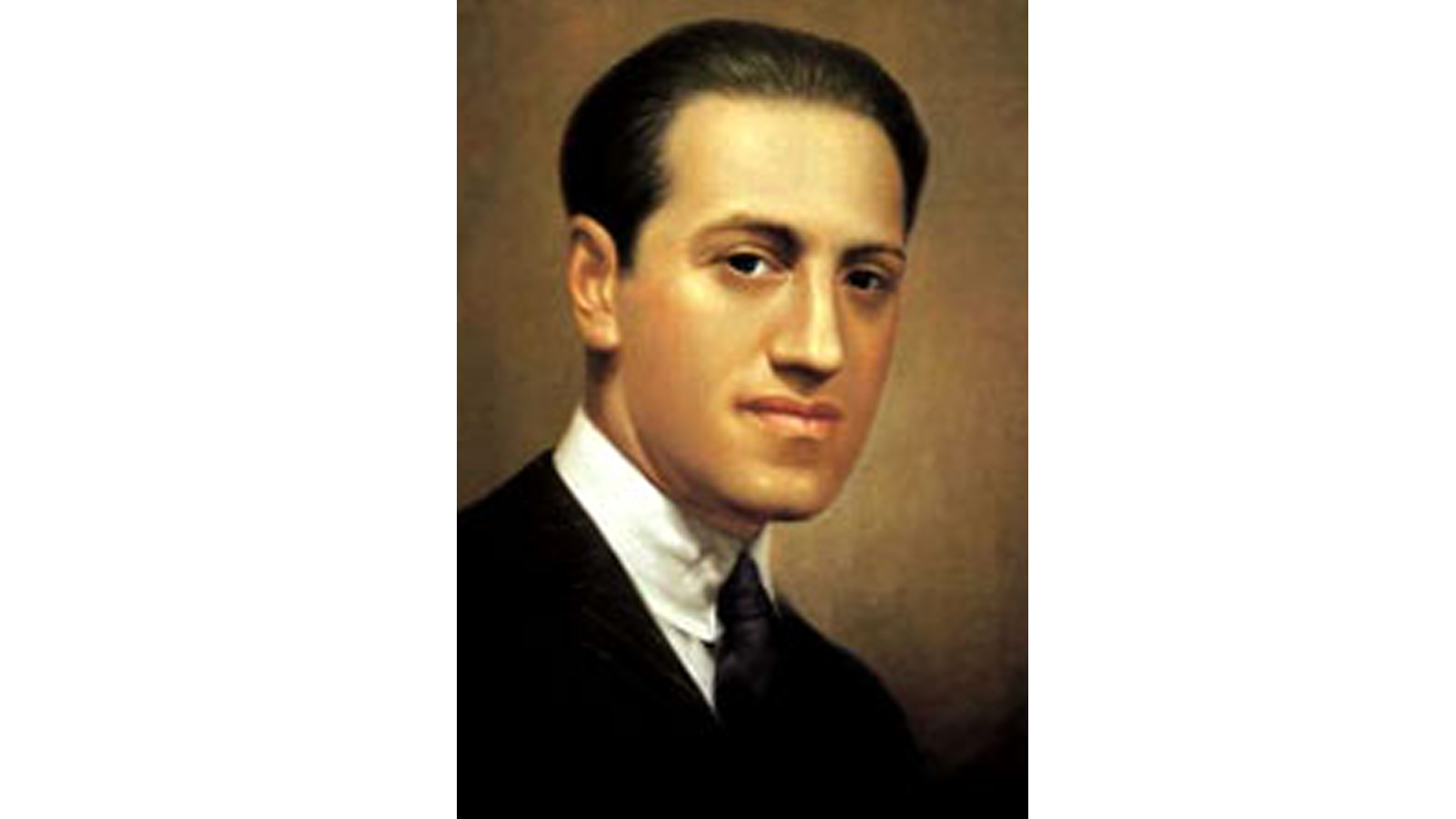
No. 13
Gershwin: Rhapsody in Blue

It is hard today to recapture the excitement that the premier of George Gershwin’s Rhapsody in Blue generated. It was one of the defining moments of the “Jazz Age”. Yet if you hear the piece for the first time it still evokes a frisson at its unexpected blend of jazz derived chords and ornamentation and its unabashedly romantic themes.
By the time Gershwin ran into Canadian mezzo Eva Gauthier in 1923, he had written a number of hit songs and was well on his way to becoming another Irving Berlin. Gauthier was known as a singer who was not afraid of something new. In fact she had become the singer that Stravinsky, Ravel and others sought to sing their new vocal works. It was she who figured out that the young Gershwin had higher ambitions musically. Guathier asked him to participate in one of her famous Aeolian Hall recitals where to his accompaniment she sang several of his songs. But even more important, after the recital she introduced Gershwin to Paul Whiteman, the popular band leader who was impressed at the way Gauthier moved between “serious” songs by “long hairs” and “popular” sheet music songs produced by the guys in “tin pan alley.” Whiteman wanted to do the same thing but from the other direction. Gauthier told the band leader that the man who could produce a new kind of “serious” music for him was young George Gershwin. So immediately after his appearance on stage with Gautier, Gershwin offered to write a piece for Whiteman. On the basis of Gershwin’s after concert offer, Whiteman booked Aeolian Hall for a concert that he claimed would present the “serious” side of Jazz. Headlining the concert were to be two new pieces of music especially written for the concert, one by the most famous of American composers Victor Herbert and one by the young George Gershwin.
Gershwin it seems forgot all about his offer to Whiteman, busy, as he was trying to get his very own Broadway show off the ground. He forgot until his brother Ira saw the announcement of the concert in a newspaper. Gershwin later claimed to write a good deal of Rhapsody on the train going to and from various theatre try outs. When Rhapsody in Blue was first heard on that concert, in an arrangement for the Whiteman band by Ferde Grofe with George Gershwin at the piano, it floored everybody there, especially the skeptical music critics who proclaimed Gershwin the prototype of a new kind of composer, a truly American composer.
Gershwin was helped immeasurably by two people who often go unmentioned. The first is George’s brother Ira, who thought up the name Rhapsody in Blue. The title cleverly encapsulated what Gershwin wanted listeners to hear, a serious or classical piece modified by Jazz or “blue” touches. It wasn’t exactly accurate, but that didn’t seem to matter; the title Rhapsody in Blue was soon on everybody’s lips. The second man who helped the Rhapsody was clarinetist Ross Gorman, who as a joke at the first rehearsal performed a glissando from his first low note to the top of the scale written in the score to open the piece. Suddenly the piece opened with a “wail” instead of a scale. Gershwin reacted immediately. To Gorman and the other players’ surprise, Gershwin told Gorman to keep the glissando for the performance. “That’ll wake them up,” he said. A clarinet glissando has opened up Rhapsody in Blue ever since, making the work instantly identifiable and unique.
Top 40 Countdown
A few years ago the listeners to WNED Classical told us what they thought a TOP 40 list of Classical pieces should be. Six hundred and twenty-two different pieces were put forward, and over nine hundred listeners participated. The result, The WNED Classical Top 40, was both startling and comforting. There were a number of surprises, Stravinsky and Copland made the list; Mendelssohn and Schumann did not! It was comforting to know that the two most popular composers were Beethoven and J.S. Bach. The biggest surprise of all was the piece that crowned the list as No. 1.